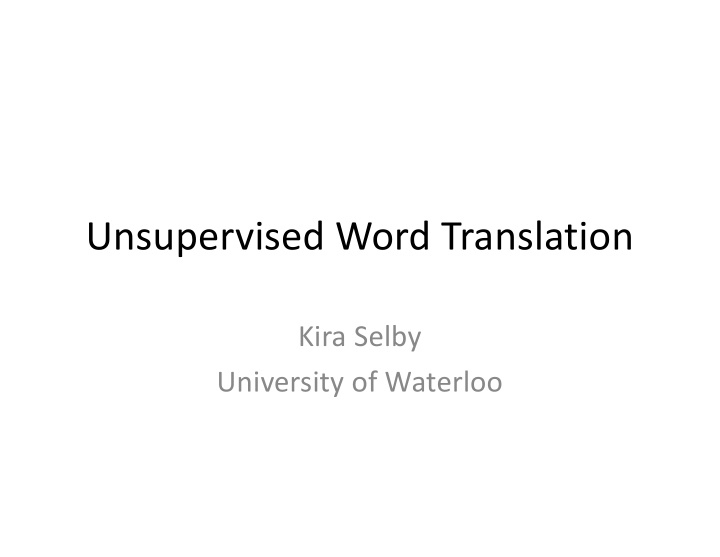



Unsupervised Word Translation Kira Selby University of Waterloo
Can we train a model to translate a language we know nothing about?
Yes we can! • Near the end of 2017, FAIR (Facebook AI Research) published a model called MUSE ( M ultilingual U n S upervised word E mbeddings) • MUSE can learn to translate between languages without any cross-lingual information! • Achieves state of the art accuracy on hundreds of languages, even coming close to or surpassing supervised models!
Word Embeddings • Word embeddings are models that map every word in a language to a fixed-size vector • The idea is to map words in such a way that the resulting vector space somehow captures something about the relationships between words • Most famous example: Word2Vec (Mikolov 2013) • King – Man + Woman = Queen
MUSE • We start with a fixed set of word embeddings in each language, typically learned from a large corpus of text • Given target vectors Y and source vectors X, we want to learn a mapping Y = XW between the two spaces • We want to do this in such a way that the distribution of vectors in each of the two languages is the same
GANs • MUSE does this by using a GAN ( G enerative A dversarial N etwork) • We train a discriminator to try to tell whether two vectors are from the same language, and a generator to map the vectors from one language into each other • The discriminator and the generator are adversaries – they each train to try to beat the other
MUSE • MUSE has been incredibly successful, and set a new standard for word translation • Many papers have been published following up on MUSE’s techniques, but there are still open problems in the area • One of the most important is to improve the performance on highly dissimilar languages and low- resource languages • This is an area that could be an excellent opportunity for a research project
Recommend
More recommend